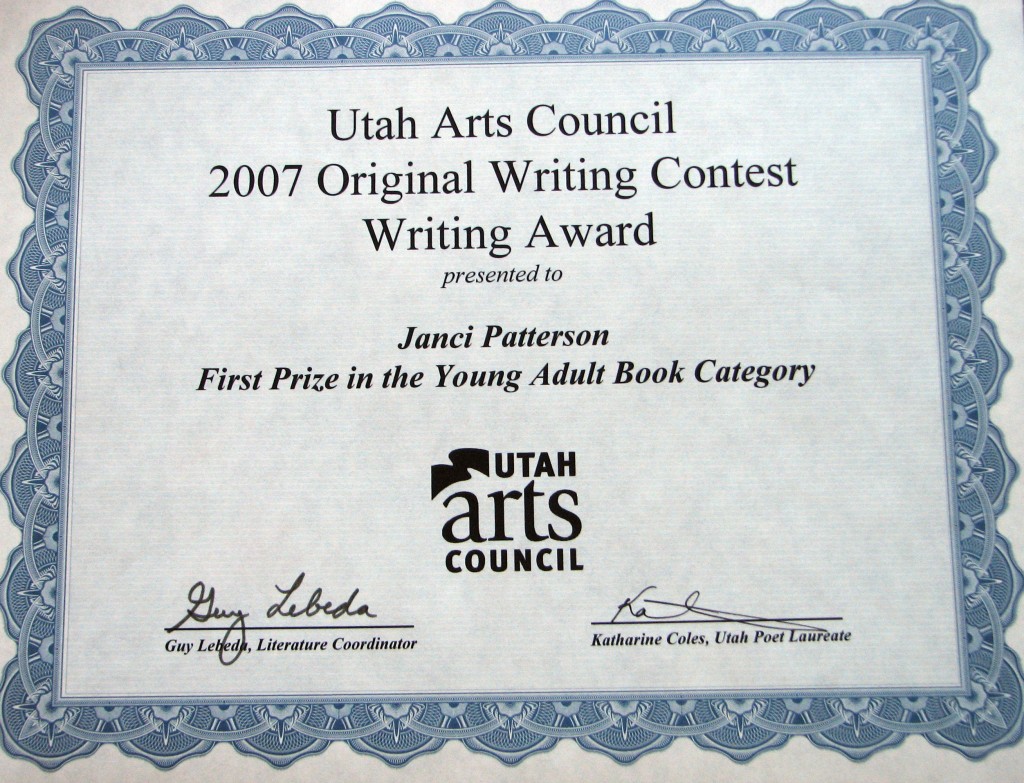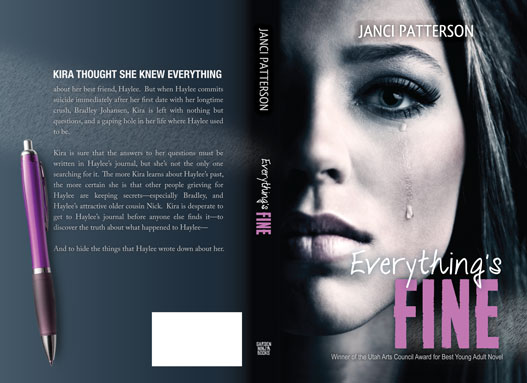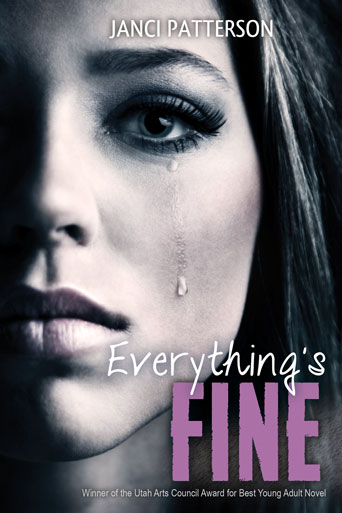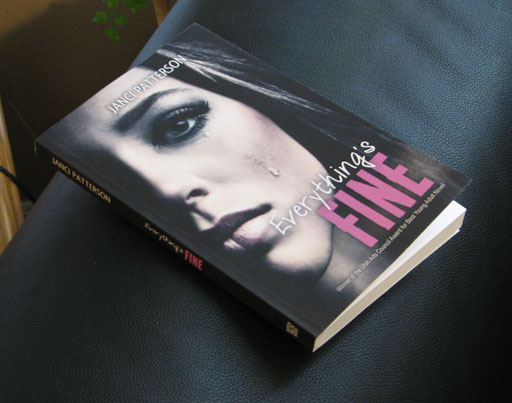I have to gush about Kristy. Meeting her was one of the luckiest things that ever happened to me. We met at The Leading Edge magazine at BYU. Not only is she my best friend from college, but she’s also the most gifted editor I have ever met. She’s been reading my work for ten years now, and giving me fantastic critiques. So when I needed to hire an editor for EVERYTHING’S FINE, it was a no-brainer. I couldn’t imagine working with anyone but Kristy.
This may sound contradictory, but when you’re looking for a critique partner, a writing group, or an editor, I really believe what you’re looking for ideally is someone who will tell you the following (in order): I love it! It’s brilliant! You’re a genius! But it’s not working at all. Rewrite it. That may sound like a contradiction, but it’s not. There’s nothing like taking criticism from someone who really gets what you’re trying to do, values it, and also can see what needs to be done to turn it into the work you meant to write and make it more attractive to your audience. And here’s something wonderful about Kristy: she sees value in everyone, but she has a sharp eye for what could make writing better. This makes her a fabulous editor. If you’re in the market for one, you want to work with Kristy.
One more thing about EVERYTHING’S FINE: if you’ve read it, you know that there are interludes between the chapters that take place over the last few years of her life, when Haylee was still alive. Those chapters are really important, because they’re the place that you get to get to know Haylee, but they were also a bit of a logistical nightmare when it came to remembering what events happened when. Before I sent the book to Kristy for a second-round edit, I tried to make a calendar about how long ago everything was and what day all the events in the book were supposed to take place. It turned into a big tangled knot, and I gave up, figuring I’d try again during copy edit.
So imagine my joy when Kristy sent the book back with not only a calendar, but a note beside every time reference in the book. Actually, it’s Tuesday. Actually, that was three days ago. Actually, this should be eighteen months ago, instead of seventeen. I could have cried. Maybe I did. The level of attention to detail that Kristy brings to a project. It’s irreplaceable.
But I’ll shut up now and let her talk:
Seems obvious to me, but it has to be asked: do books need editors? Why? How would you explain the need for an editor to someone who has never worked with one before?
Yes, all books need editors! Even best-selling authors who have been writing for decades need editors. When you are writing, you are immersed in your world. Sometimes things you think are clear, because they are clear in your head, aren’t as clear in the text. A fresh set of qualified, expert eyes is invaluable to catch plot holes, or characters that don’t really function well in the story, or stylistic changes that detract from the story. A good editor’s job is to give you constructive feedback on what is and isn’t working in your writing so you can tell the story you really mean to tell in the way you want to tell it.
That last bit is the gift of a great editor. Thank you for getting it! So, what is the difference between professional editorial work and a critique from a friend or another writer?
A critique from a friend or another writer is great, because friends are going to be champions of your work and give you support. They may be able to point out where things aren’t working, but in general, they’re probably not going to give your manuscript the same in-depth, experienced critique a professional editor will.
A professional editor’s job is to give you the feedback you need, especially regarding the places where the writing isn’t working or where things need to change to make a better book. For example, a professional editor has the training and experience to look for problems such as plot holes, side plots that fizzle out, pacing issues, or characters who aren’t pulling their weight or who suddenly start acting out of character without explanation.
What is your role in the creative process?
My role in the creative process is to support authors as they create and refine their books. I point out issues I see, and may make suggestions on ways those problems can be fixed to help the author see the problem from a different point of view. I point out areas that are working, and highlight differences between the sections that are spot on and the ones that need a second, third, or fourth look to get them into shape. I ask the hard questions the author needs to think about to tighten and refine the story.
Basically, my role is to help you, as the author, to say what you are trying to convey in the most effective way possible. It’s your story; I just help you tell it the way you meant to from the very beginning.
I, for one, could not produce a finished product without that support. What advice do you have for writers looking to hire an editor? What questions should they ask? What agreements should they make before they begin a working relationship?
First, I’d say to figure out what kind of editing you’d like. A substantive edit is going to deal with the big picture items—such as plot, characters, and pacing issues, and it won’t usually deal with word-level problems.
A copyedit refines the text, finding continuity errors, fixing grammar and punctuation problems, adding missing words—mainly fixing problems at the word and sentence level.
Some good questions to ask an editor before you start working with each other would be:
What kind of editing do you do?
If you are looking for a substantive edit, and the editor only does a copyedit, you’re not going to get what you’re looking for.
Do you work in my genre/are you familiar with my genre?
An editor doesn’t necessarily have to be familiar with your particular genre to do a good job, but it can help, because then the editor is familiar with the common tropes and trends and can better help you refine your work to appeal to your desired audience.
What are your rates, and can you give me an estimate on how much you would charge to work on my project?
Pricing varies widely between editors. Some charge per word or page, some charge per project, and others charge by the hour. It’s good to know up front whether the editor will be in your price range, and whether you are satisfied with the potential cost.
How do you like to be paid/when do you require payment?
Some editors only accept checks, and others allow payments through systems such as Paypal. Also, some require a portion of the payment up front while others wait until the project is complete to charge the fee.
Do you have an estimated timeline for when you could fit in my project, and how long do you estimate the edit will take?
Life happens, and deadlines can be moved back, but it’s good to know up front how long you should need to wait for the work to be done, or whether the editor of your choice has time to complete the project within an acceptable timeframe for your plans.
Many editors will also edit a small amount of text (the amount varies depending on the type of edit and the editor) for free so you both can determine whether the project will be a good fit for the editor’s preference and skills, so it’s helpful to ask whether that option is available.
You should also find an editor who is excited about your project. A good working relationship is important; you should feel comfortable conversing/emailing with the editor.
It can help to create a written contract, but not all editors do so, beyond a verbal or emailed commitment. You should always be clear on the timeframe, level of editing, and a firm estimate on the price and timing of the payment before you begin, however.
What challenges do you encounter working with clients? How do you handle those challenges?
Each project has its own challenges. However, it can be hard for a writer to hear that their hard work isn’t done yet. You pour all this time and effort and commitment into a novel, and then an editor comes along and tells you that entire sections aren’t working! I never want to discourage my clients—I always try to include all the things I love about the work, too, along with pointing out areas that can improve to make the book more readable and a tighter story.
Mostly, challenges can arise if there isn’t clear communication. I make sure to query anything I’m not sure about in the text, rather than just changing things willy-nilly. I also am upfront about what I offer and any potential costs before I begin a project.
What advice would you give to self-publishers about the editing process? What does every self-publisher need to know about getting their book edited?
The editing process can take time, but it really is important. A fresh set of professionally trained eyes strengthens your writing and helps you to put forth the best possible piece of work. Also, needing an editor doesn’t mean that you’re a bad writer. Even the most successful authors need an editor to put forth their best work.
The time, money, and effort it takes to get your book edited is worth it—it is hard for readers to want to finish a book or pick up another by an author with a book that still has plot holes, character problems, or even just grammar and spelling issues. A professional edit enhances your credibility as a polished, professional author.
What kind of books do you edit? What kind of work are you looking for?
I primarily edit middle grade and YA books. My preferred genres are contemporary, science fiction, and fantasy. I do both substantive edits, where I look at the big picture issues, and copyedits, where I help authors refine the prose and point out style, grammar, and punctuation problems. Feel free to check out my website.
Seriously. I can’t say this enough: if you’re looking for an editor for your work, you should check out Kristy. You won’t find anybody better.
Thanks, Kristy!
, I have to admit to jealousy. This is one of those books that makes me wish I’d thought of it. Here’s the blurb:





